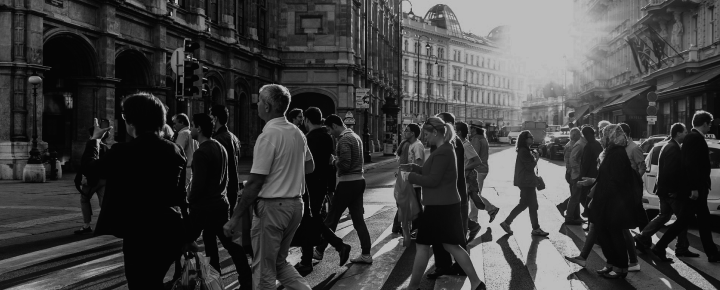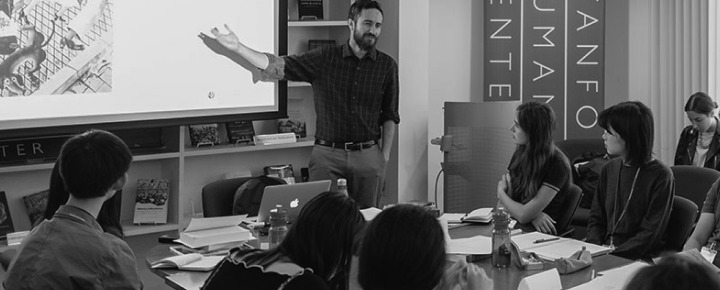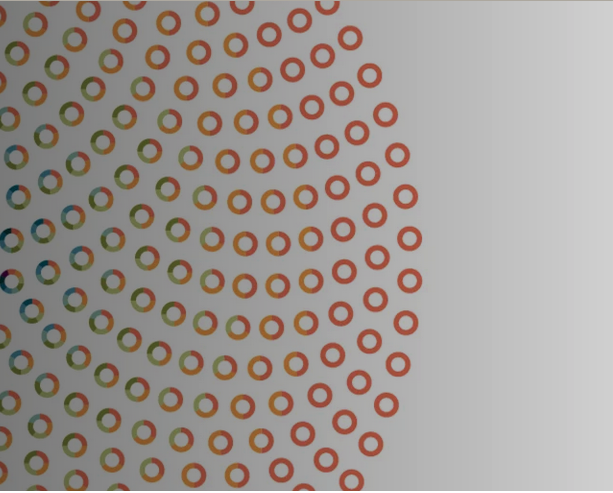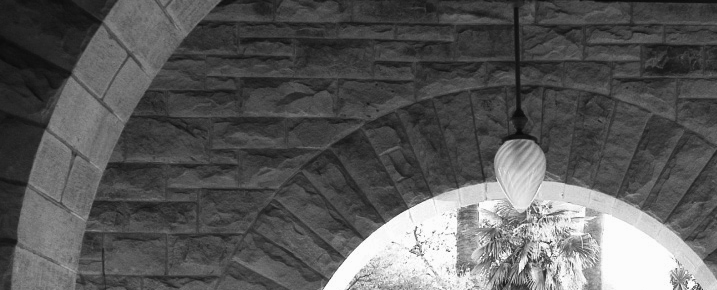
After a conference in Sydney a couple of years ago, my friend Anthony drove me to his summer house in Bawley Point, a surfer’s paradise on the southern coast of Australia. Never having witnessed anyone surfing in real life, I was eager to head to a look-out point.
But Anthony, knowing my interests in Kantian aesthetics, suggested that I visit his neighbor’s yard and check out the nest of the bowerbird. Intrigued I put off my hankering for the sea and ambled to the neighbor’s house. The birds had left but I did find their astonishing nest in the front lawn.
Rather than traditional cup-like structures, the male bird had gathered reeds and grasses, and bent them into an arch. Amazingly, in his attempt to lure potential females to the nest, he also created a pathway of ornaments all in indigo blue: stones, plastic bits, Dasani bottle tops, broken glass, and straws. Why all in this particular color I wondered? It seemed that the male was making particular choices, like a postmodern artist, collecting trash and trinkets.
Foregoing the beach, I returned home and learned that the bowerbird’s behavior served as an example of sexual adaptation that was supposed to improve survival. But what type of adaptation did this indicate? What did this corridor of blue reveal to the female bird about her paramour? Strength? Intelligence? For me it showed that the male bird was making aesthetic judgments. Unlike his feathers or beak, over which he had no conscious control, he was choosing objects of a particular color to attract females.
Over the years I have been unpersuaded by the evolutionary explanation of beauty, that it was an adaption for survival. I have wondered, for instance, about the function of the peacock’s flamboyant tail. Would this awkward appendage not more likely get in the way of his attempts to flee a predator? Moreover, what could the tail communicate to the female? Good genes? Fitness? For that matter, what does the square, chiseled jaw reveal about the strength and intelligence of the guy sipping a martini in a bar? Not much. The same must be true about the peacock I thought. Surely the lane of the indigo blue laid out by the bowerbird must manifest an aesthetic disposition rather than simply express an instinctive process.
These questions were of direct concern to my work. Over the years I had written about the place of beauty in life. I have argued that, although we might disagree over the definition of beauty, people all over the world create it self-consciously either by painting the body, a canvass, composing a song, drafting a poem, or staging a play. Just because this beauty is sometimes part of a religious ritual or sexual game does not mean people don’t value it.
In my classes I suggest that we cherish beautiful moments because they are not utilitarian. When we behold a sunset, listen to a song, read a novel, brush a finger against a baby’s face, or go to an art gallery, we are concentrating on that experience itself rather than being engaged in an instrumental activity like making bread or driving. Literature, my specialty, is another manifestation of our preoccupation with beauty. It provides an imaginary space which we enter knowing all the time that it is a fiction. We have, in other words, a disposition towards beauty that expresses itself in different ways, from tattoos to television dramas.
That afternoon in Bawley Point what I wanted to say about the bowerbirds was that they had a taste for the beautiful, which was independent of an ultimate purpose like evolutionary adaptation. But not having any expertise in evolutionary biology, I dropped the matter until this summer when I read Richard O. Prum’s The Evolution of Beauty. How Darwin’s Forgotten Theory of Mate Choice Shapes the Animal World.
As the titles implies, Prum returns to a theory already conceived by Darwin on the relationship between beauty and mate selection. According to Prum, Darwin had developed two ideas, one on the evolution of beauty and the other on the origins of humankind. Natural selection and sexual selection were for him two different processes. While biologists largely ignored his ideas on the role of beauty in mate choice, Prum resurrects them, arguing that animals are not simply subject to extrinsic forces of ecological completion and geography but play a role in their own evolution through sexual selections. Crucial here are females who ultimately define what is beautiful and who, thereby, push evolution forward. Beauty, whether in the animal or human world, exists in the eye of the beholder.
This suggests that evolution, like human fashion, is driven less by function than by subjective feelings of beauty. The most attractive male is not necessarily the most healthy. Feathers, color, songs, and other ornamental features, very costly in time and energy, don’t improve chances for survival. In short, beauty in animals and humans is not subject to a purpose or grand design but has value and power in itself. Beauty surrounds us and we respond to it with pleasure. It comes to be without ultimate meaning, expressing the desire of animals to admire and be admired. Evolution then is as much about allure, sensory delight, and subjective experiences as it as about survival of the fittest.
Prum’s return to Darwin’s more revolutionary theories of evolution is part of a great effort in recent years to rethink our traditional, anthropocentric view of animals. Studies have appeared on the intelligence of crows, the capacity of the octopus for theory of mind, the aptitude of wolves for empathy, and the creation of culture by dolphins.
The reconsideration of the place of beauty in the world should inspire humanists to rethink the place of beauty in the curriculum. Out of fear of essentializing beauty, we have largely banned it from the domain of theory. We seem even to distrust it, finding it self-indulgent and meretricious. Beauty, after all, calls attention to itself. Flowers, feathers, whistles invite us to stop whatever we are doing and concentrate on them. What is a poem, after all, other than language showing off?
But isn’t this the whole point of beauty, either natural or human made, to make us stop and observe. In Mary Oliver’s lovely poem, “The Summer Day,” the speaker finds herself ambling through the meadow, crouching down to marvel at a grasshopper. Is this a waste of time? “I do know how to pay attention,” she says, “how to fall down/ into the grass, how to be idle and blessed.” What else should she be doing, she wonders. And then she asks: “What is it you plan to do/ with your one wild and precious life?” Though useless, beauty asks us to think about this issue.
Recently I was confronted with this question when our Dean spoke about the alarming decline of majors in the humanities. He suggested that parents in search of something tangible from post-secondary education often dissuade their high school children from majoring in the humanities. They consider the arts an impractical preoccupation.
And so we were asked to revise the “snapshot” statement parents and high school seniors see when they look at departments on the university page. We were encouraged to include real-world skills students would acquire if, for example, they studied Modern Greek — my discipline. As a parent of two sons who finished university with degrees in arts and humanities and one daughter who just started in biology, I was sympathetic to this exercise. So, I enumerated what students would learn in order to be “competitive in our globalized world:” How to build persuasive arguments, write elegant papers, speak in front of an audience, think critically, and acquire empathy. But for the last item I added: “appreciate the importance of beauty in life.”
What else could we be doing, to quote Oliver again? We have grown numb to beauty in a society sacralizing goal-oriented, means-driven, purposeful action. Effectively we have unlearned what the animal world has never forgotten, that beauty surrounds us. Perhaps it’s time to follow the lead of the bowerbird.



